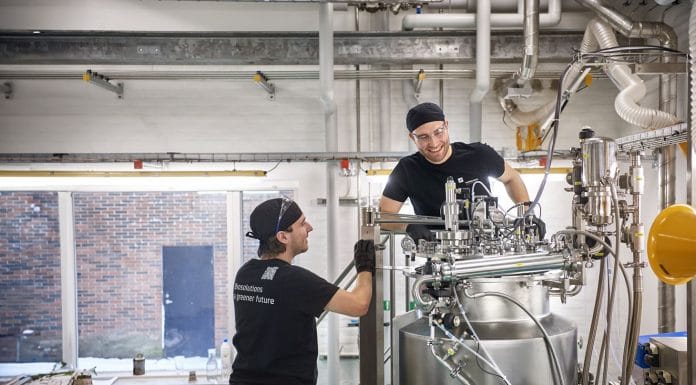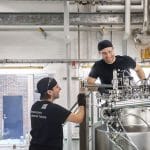Biosolutions are built on nature’s smallest components but hold immense global potential. They can help Europe become more sustainable and resilient by reducing dependencies, strengthening food security, and boosting competitiveness – if we let them.
The world is changing fast, and major interconnected challenges are mounting. Feeding a growing population sustainably, mitigating climate change, and optimizing resource use are urgent. The war in Ukraine and subsequent shortages of corn, wheat and fertilizer ingredients have exposed vulnerabilities in Europe’s food supply chains, while recent trade disruptions have further highlighted strategic dependencies.
Europe relies heavily on a few geographically concentrated regions for essential agricultural inputs. Now more than ever, we must reduce these dependencies, de-risk our supply chains, and accelerate the shift to a more resource-efficient, low-carbon economy.
The fusion of biology and technology offers promising answers — we call them biosolutions. Imagine increasing crop yields and protecting plants with biological solutions that reduce the need for synthetic inputs. Consider using biology to capture CO2 and convert it into valuable raw materials. Picture how enzymes can improve animal gut health, enhance feed efficiency, extend food shelf life, and reduce waste. Though microscopic, biosolutions can improve and support systems we rely on, offering practical tools to foster sustainability, resilience, and security across sectors.
A must-have toolbox for agriculture
Biosolutions can reshape the agricultural value chain — one of several sectors where they can boost European competitiveness and resilience. At field level, their potential can be illustrated through three key product classes.
The first is next-generation seeds, enabled by advanced breeding technologies like CRISPR. Innovations such as new genomic techniques can quickly enable climate-resilient, pest-resistant, nutritious, high-yielding crops that need fewer fertilizers and pesticides, thus strengthening food security and European sovereignty.
Second are biocontrol products: biological alternatives to synthetic pesticides that reduce pest pressure and help secure yields. However, these products are not being placed on the EU market at the same pace as conventional substances are withdrawn. Unless this gap is addressed, Europe risks undermining its own food production capacity.
Third are biostimulants and biofertilizers, which enhance crop resilience to drought and other stressors while reducing dependence on imported fertilizers. Given Europe’s reliance on raw materials from regions like Russia, expanding domestically produced alternatives is both environmentally and strategically crucial.
Beyond the farm: endless opportunities from biomass
Beyond the field, biotechnologies use microorganisms to convert organic carbon sources like biomass, sugar, and waste into high-value end products such as proteins for feed and food and biomaterials for construction, packaging, and textiles.
Europe’s protein supply is highly dependent on imports — especially soy from South America — exposing the food system to global market fluctuations and sustainability risks. By boosting local protein production, we can strengthen food security.
With global protein demand set to double by 2050, expanding agricultural land to feed twice as many animals is not viable. Instead, we must meet this demand by producing enough proteins – both for feed and for food – within current land use boundaries. Biosolutions can increase yields, diversify protein sources, and upcycle agricultural side streams into high-value ingredients.
Not about phasing out meat but strengthening protein autonomy
Biotechnology in agrifood is politically sensitive in the EU. Some fear biosolutions will replace traditional farming with steel tanks filled with fermented proteins. This is a false and counterproductive narrative.
Biosolutions are far more than cultured meat. They are essential for any farmer wanting to protect crops as synthetic pesticides are phased out or feed livestock with high-quality, locally sourced proteins that don’t depend on insecure supply chains.
This isn’t about replacing animal or plant-based proteins — it’s about complementing them. We will need both. Ultimately, it’s about expanding the foundation of food production to sustain a growing population. There are major opportunities for farmers here. They’re not just adopters of biosolutions; they’re key suppliers of the biomass needed to produce them.
Danish farmers and food companies are already integrating biosolutions. Arla Foods, for instance, has long used biosolutions to transform dairy by-products into high-value ingredients. Whey from cheese production — once considered waste — is now refined into nutritional ingredients for sports, medical use, infant formula and the food industry. Across Europe, there’s vast untapped potential in refining side streams, reducing waste, extending shelf life, and upgrading residual products.
Europe risks losing its competitive edge
Despite world-class biotech research, Europe struggles to commercialize innovation. Fragmented regulations, slow and nontransparent approval processes, and low investor confidence hinder progress. EU approval times for biosolutions can be three times longer than in the U.S., and the lack of integrated capital markets makes scaling difficult. Public misperceptions and political hesitation further delay acceptance.
Europe’s thorough, resource-intensive approval processes have secured high consumer trust — a vital asset for global exports — and that trust must be preserved. But regulatory frameworks haven’t kept pace with science, and EFSA lacks the resources and capacity to evaluate the growing pipeline of biosolutions efficiently.
If these hurdles persist, the biggest loser will be Europe. Companies can — and do — relocate. While the EU debates, North America and Asia scale biosolutions through targeted policies and investment. If we don’t act, companies born in Europe will grow up overseas, costing us high-value jobs, cutting-edge technologies, and access to tools that could help meet our green goals.
A moment of opportunity: the time to act is now
Fortunately, momentum is building. EU initiatives — from omnibus packages to a bioeconomy strategy — offer hope. A bold Biotech Act that includes biosolutions in agrifood could unlock major potential. But ambitions must be followed by implementation. We need a product-focused regulatory framework, based on risk-benefit analyses and scientific trials that evolve with new technology.
By harnessing nature’s smallest building blocks, we can tackle some of the world’s biggest challenges. Now is the time for Europe to act.






